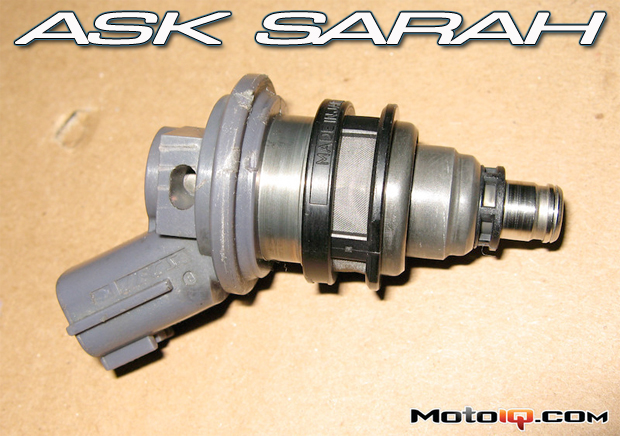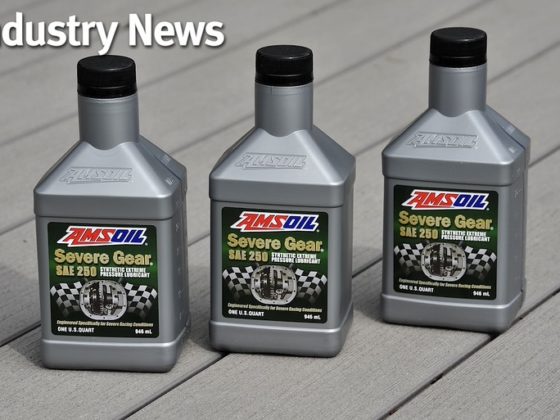,
Got a Tech Question? Email Sarah at asksarah@motoiq.com
 |
| The Walbro 255 LPH fuel pump is inexpensive and performs well in most applications. |
Your turbo system cannot be complete without a few more upgrades. A Turbonetics or Greddy blow off valve and an electronic boost controller will be necessary to get to your desired boost. Proper engine and fuel management will allow you to tune your setup for the most horsepower while maintaining a safe air/fuel ratio. Running low boost under 10psi can usually be handled with a high pressure, high volume fuel pump and rising rate fuel pressure regulator that can provide more fuel from the stock injectors, but running larger injectors without some fuel management would cause the car to run rich. An AFC such as the one by Apex intercepts the signal from the air flow meter, modifying the signal at different rpm so that the ECU will run richer or leaner. This will allow you to run larger injectors at full boost and the AFC can shorten the injector pulse width at idle and part throttle to take out some fuel when it’s not needed. This will also keep you from hitting the fuel cut as early. Remember MAF signal tweaking will cause you to run at in your ignition timing map at an unknown offset so be careful when using a tweaker box. This is one of the main disadvantages of tuning with magic boxes! The other disadvantage is that these boxes fight the ECU's self learning loop. To be really serious you should look into a stand alone ECU such as an AEM, which has a lot of favor among DSM tuners.
 |
| Bullseye Power Intercooler |
The stock side mount intercoolers on both the 1G and 2G don’t flow or cool well so you could upgrade to a FMIC (also requires piping to reroute from the new FMIC to the factory SMIC connections and some minor trim work to the front bumper to fit) or use a larger SMIC like the one from Bullseye Power, which only has 1psi of pressure drop. You’ll also need to invest in complete 3” exhaust system and should get a Random Technology high-flow catalytic converter, which has a 3” inlet and outlet. The stock cat necks down to 2 ¼ inches, creating a major restriction to flow. For race use, don't run the cat!
 |
| The 1G throttle body is the larger on on the left. |
There are other modifications you can complete to increase air flow even more. The stock first generation 4G63 engines have larger intake ports and intake manifold runners and flow more capacity than the second generation heads. A head swap is possible but the 2G intake ports can also be ported to flow the same volume as the 1G head. A ported exhaust manifold would increase flow to the turbine. These mods will net faster throttle response, less turbo lag, and more midrange power. The 1G uses a 60mm stock throttle body instead of the smaller 52mm throttle body found on the 2G’s. The 2G air flow meter flows well until 400 horsepower so you’re right at its limits, but if you want to go bigger, you can install the 1G throttle body (if you can find one) on the 2G. You’ll need the throttle body to manifold gasket and the throttle body to throttle body elbow gasket to complete the install. An easier option may be just to port the stock 2G throttle body out to 58mm.
 |
| The Turbonetics Newgen HP wastegate features a swing valve design that provides a direct path for exhaust gases, keeping boost pressure under control. This particular wastegate may be a little oversized for your application as it can handle up to 1000 horsepower, but it gives you an idea of what you can aspire to! |
And if you’re paying, I’ll keep adding to your shopping cart. Remember, MotoIQ is all about “do you want to go fast or suck?” You don’t want to suck, right? Eliminate more restrictions to flow- get a five angle valve job and aftermarket cams! Whew, I almost forgot cams! Hmmm… the HKS 264 intake / 272 exhaust cams would be a good upgrade. Might as well throw in the 18G turbo now! How’s your wallet making out?
Next payday, you’ll need to focus on the drivetrain to get that power to the ground. With this setup, your stock clutch is bound to crack under all this boost pressure! Look for the lowest posible clamp load, low pedal effort clutch that will hold your power to avoid the dreaded 2G crankwalk. And a lightened flywheel will free up power more quickly. Road Race Engineering sells one that is four pounds lighter than stock. A Quaife limited slip differential will send more power to the wheel with the best traction. And we can’t have you experiencing wheel hop- that’s the fastest and easiest way towards busting your differential. Upgrade to stiffer motor mounts and ES bushings. With that power, you’ll also need bigger brakes to stop and better suspension to keep yourself grounded.
Let’s just hope you don’t experience any of that dreaded and all-too-common crankshaft walking many 2G owners have had. The crank should not have any play horizontally. But I don’t want to scare you off! Now, build that car so I can get a ride!



